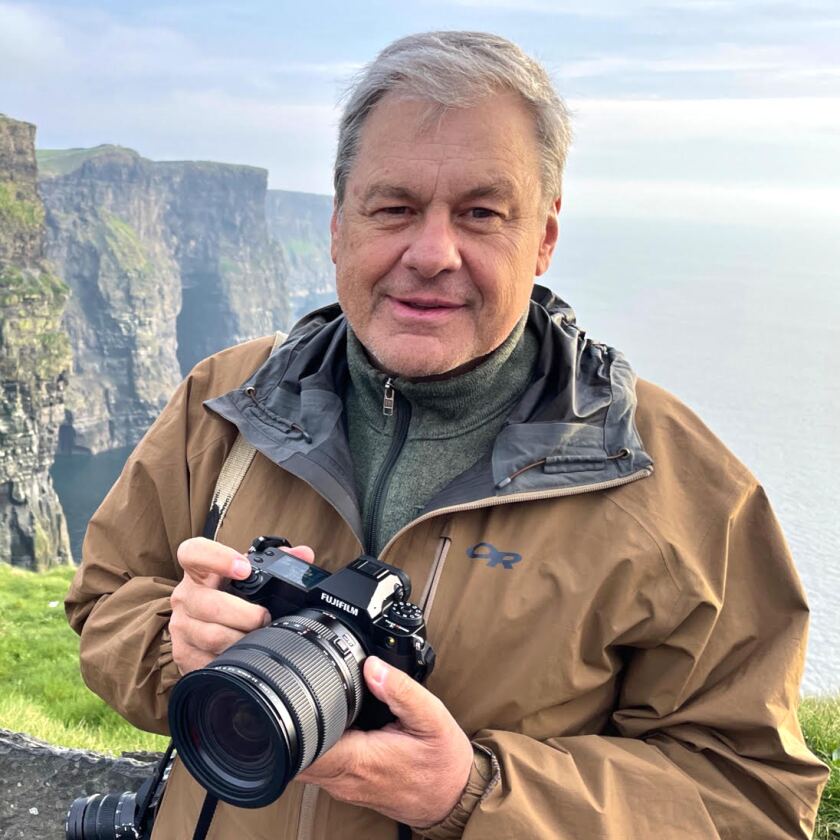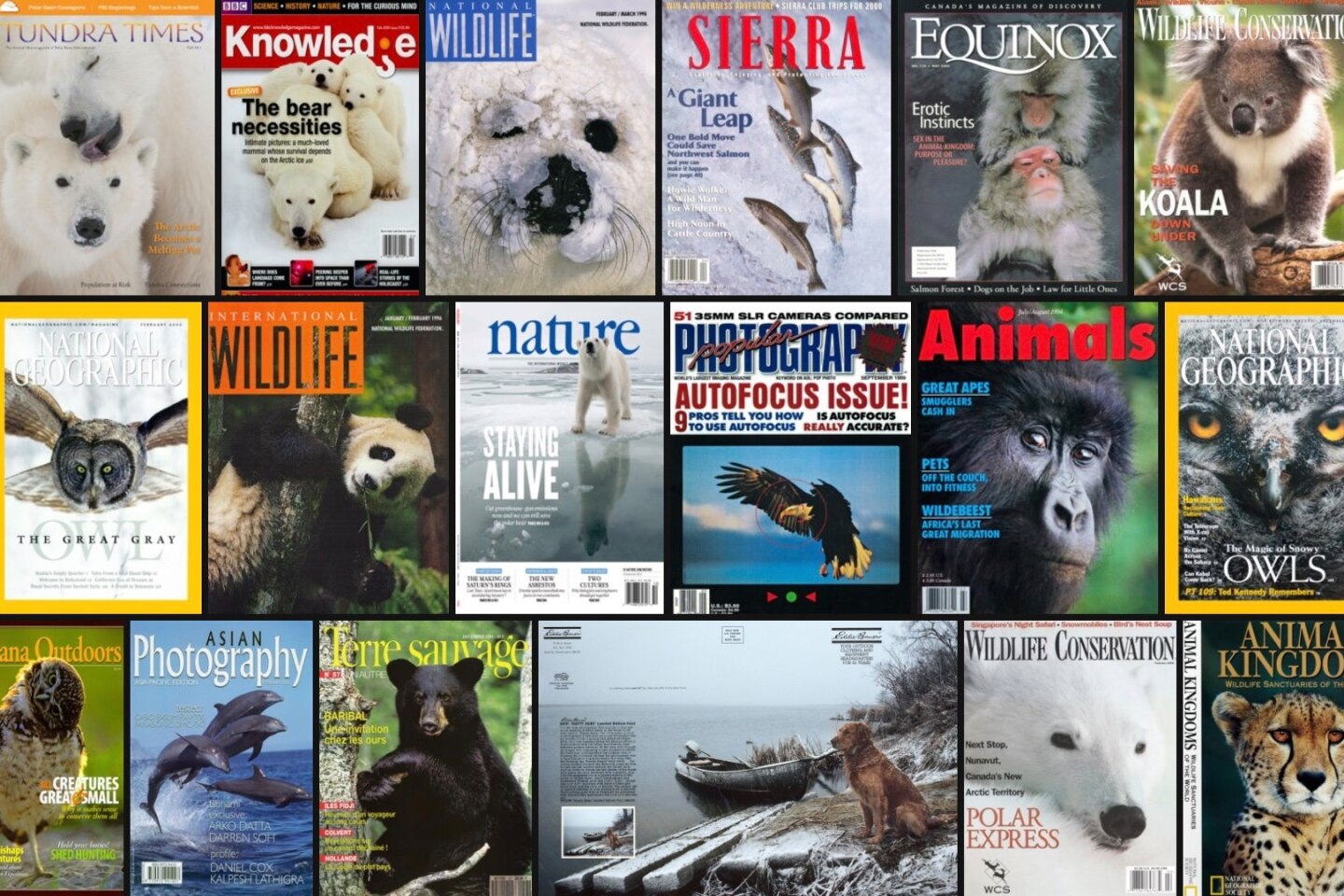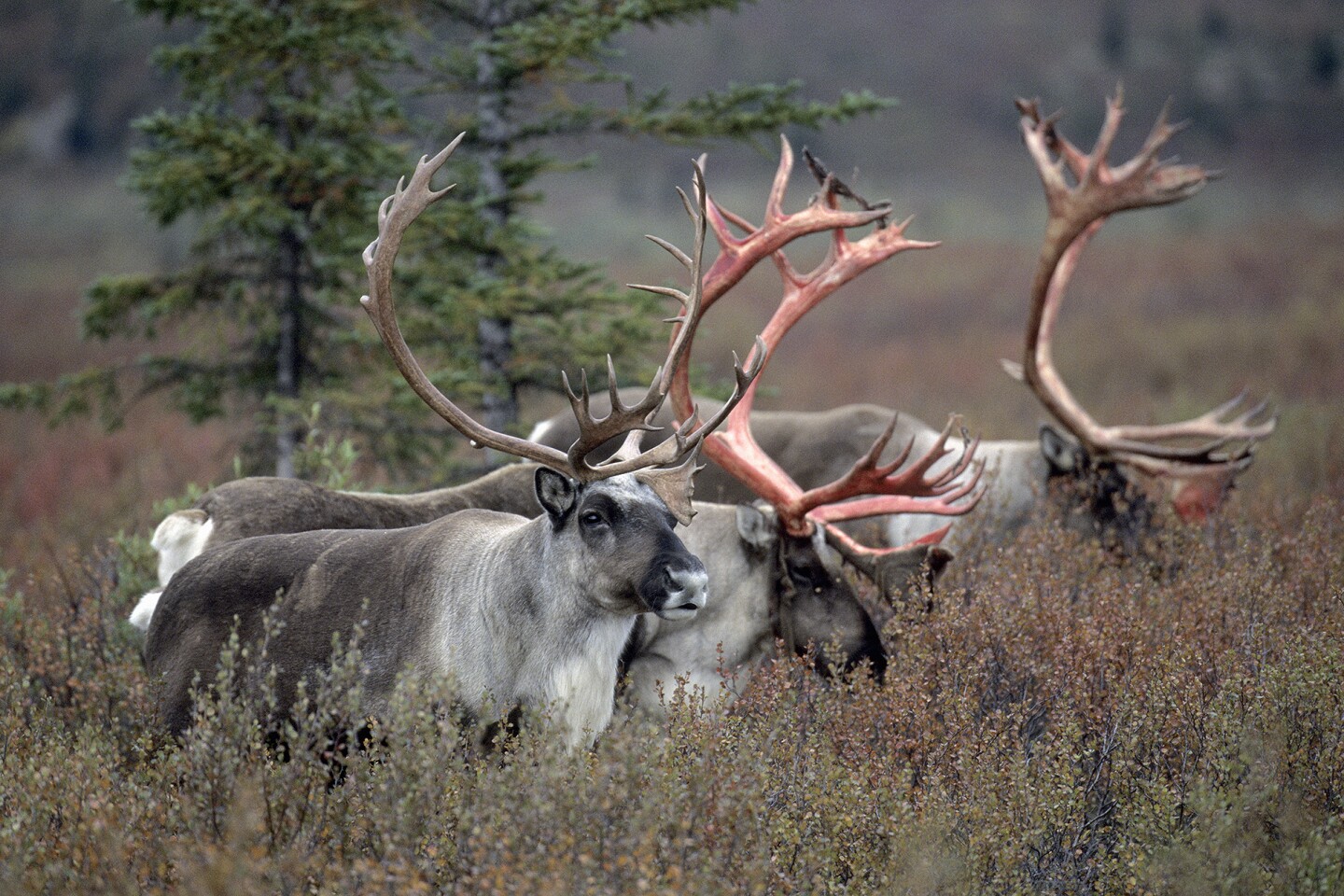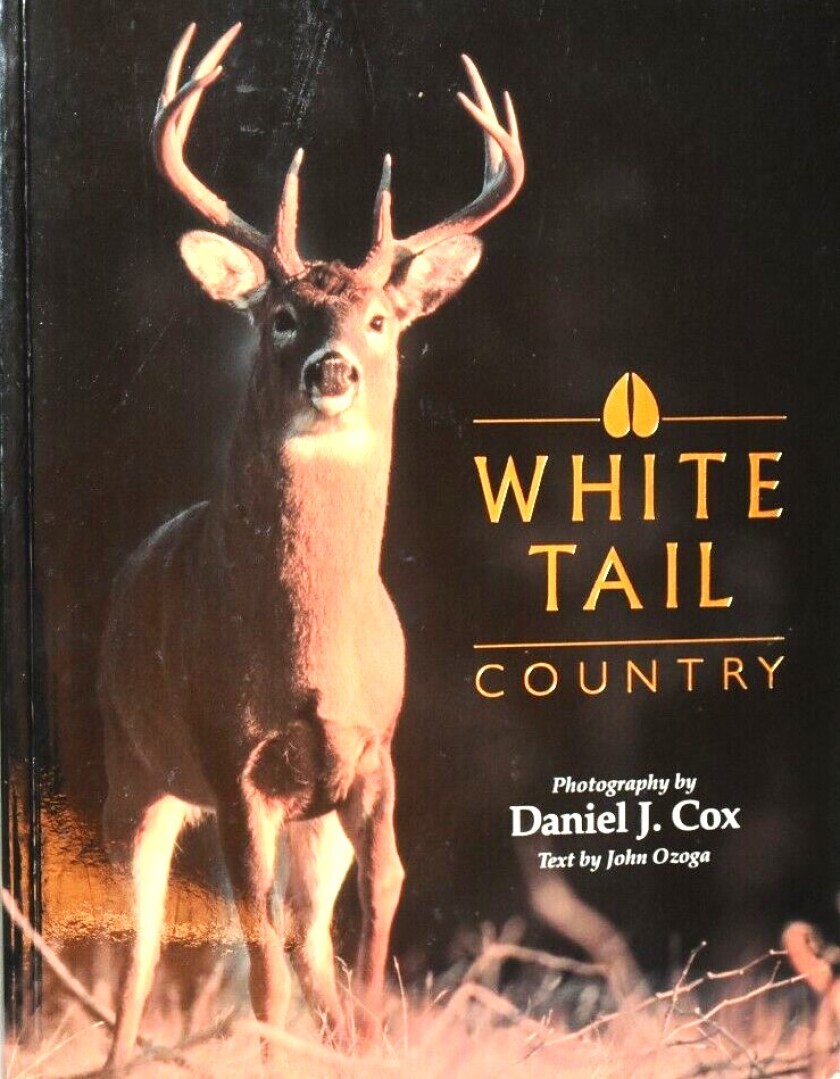DULUTH — Daniel Cox was home in Bozeman, Montana, for a few days in mid-March, between one of his regular trips to the Arctic to document the plight of polar bears and a trip to the Galapagos Islands where he was leading a photography tour.
“It’s a pretty good life,’’ Cox said during his brief downtime. But I am on the road a lot.”
ADVERTISEMENT
Cox, 64, has been a professional photographer for more than 40 years, focusing on wildlife and wild places worldwide. You may have seen his work on the covers of National Geographic, Audubon, Nature, Sierra and numerous other magazines. Or maybe you have his first book, "Whitetail Country," on your coffee table.

For the past 25 years, he’s been organizing tours of budding photographers to all seven continents, leading adventure travelers who have big camera lenses, taking them to places to capture incredible wildlife photos and then showing them how to do it right.
Cox received the 2013 Outstanding Nature Photographer of the Year and the 2023 Environmental Impact Award from the North American Nature Photography Association. His work has been featured in several galleries, including Nikon House New York, the National Museum of Wildlife Art in Jackson Hole, Wyoming, and the Natural History Museum in London.
Cox is a member of The Explorers Club, an international professional society dedicated to the advancement of field research and the idea that it is vital to preserve the instinct to explore. He supports nonprofits and conservation groups including the National Wildlife Federation, Owl Research Institute, World Wildlife Fund, Smithsonian, ARKive, International Wolf Center and more.

But his real passion for nearly two decades has been polar bears, and more directly, the organization Polar Bears International and the impact climate change has on the Arctic and worldwide.
“I’ve always lived in a northern state. … I am drawn to the north and to the cold, I guess,’’ Cox told the News Tribune. “Unfortunately, we’re losing some of that.”
It’s hard to imagine that a kid who grew up in Twig in the 1970s and graduated from Proctor High �������� could have known where his passion for photography would take him. But Cox says he realized decades ago that his photographs could be more than just awe-inspiring — they could be instruments to help conserve wildlife and the wild places they need to live.
ADVERTISEMENT
That philosophy inspired him to get involved in the Arctic Documentary Project in 2005. His passion has taken him across the Arctic — Alaska, Canada, Norway — photographing the far north's people, landscapes and wildlife while witnessing firsthand how warming temperatures threaten the region.
His photos of the Arctic are used by Polar Bears International, the nonprofit group trying to push for action by people and governments to cut greenhouse gasses and reduce our carbon footprint that’s warming the north.
“People love polar bears. It was clear that my photos could strike a chord with people all over. They (the bear photos) are a hook to get people interested in climate change,’’ Cox said. “As we say, save the polar bears, and we are going to save ourselves.”

'Go inspire change with your photography'
Cox was born in Spokane, Washington, but moved at age 7 with his family to Twig, just outside Duluth, where they had a small hobby farm.
“It was out on Highway 7, Industrial Road. We had horses. I grew up haying and doing chores and playing hockey on the local rink, hunting grouse and deer with my dad. … It was a great experience,” Cox said.
At Proctor High ��������, Cox credits drama teacher Bruce Watkins and a role in a school play for instilling confidence to do public speaking, and teacher Glen Sorenson (later Minnesota Teacher of the Year in 2005) for helping fertilize the seeds of his fascination with photography.
ADVERTISEMENT
“Glen Sorenson was very instrumental in my early years," Cox recalled. "I was 16 when he gave me an assignment to go photograph the homeless people in Duluth. His comments were something to the effect, 'Go inspire change with your photography.' Glen is also an avid outdoorsman which was also inspiring.”

Just last month, Cox was the keynote speaker at an event sponsored by the foundation for Proctor schools that raises money for better educational efforts in the district. He regaled a sold-out Greysolon Plaza ballroom with tales of his travels and the story of polar bears.
“It’s our biggest fundraiser of the year. We sold out, 250 tickets,” said Sherman Carlson, retired Proctor school superintendent and president of the foundation. “I’ve kept in contact with Daniel over the years and he’s always said he would come back for this. ... We just had to book him two years in advance because he’s so busy.”
Cox graduated high school in 1978 and attended the University of Minnesota Duluth, where he majored in communications and took photos for the school newspaper, the Statesman. His college job was working at Grandmaison Photography, a Duluth photography studio. At first, he made prints in the darkroom and was eventually assigned to photograph weddings.
“He came in asking for a job," said Dan Grandmaison, founder of the business. "He was just a college kid, but he offered to clean out the darkroom, take out the garbage, anything to get into the darkroom and learn. I was so impressed with his aggressiveness, his willingness to do the work, it wasn’t a hard decision to hire him.

"I always tried to hire people with personalities," Grandmaison said. "You can teach anyone to do the technical work. But you can't teach personality. Dan just seemed to have that kind of personality.”
Grandmaison suggested Cox attend a photography convention in South Dakota, where Cox met noted wildlife photographer Pete Czura. From there on, Cox, who was just 20 at the time, was hell-bent on being the next great wildlife photographer.
ADVERTISEMENT
He dropped out of the University of Minnesota Duluth — even his adviser said he was ready to go and didn't need the degree — started traveling to photograph wildlife and eventually moved with his high school sweetheart to Bozeman. He had fallen in love with the area on an earlier bicycle trip from Glacier to Yellowstone national parks.
“I figured it was so close to the park (Yellowstone) and so many great animals around that I wouldn't have any problem selling photos to traditional outdoor magazines,” like Outdoor Life, Field & Stream and Sports Afield, Cox said.
For many years, Cox did just that, earning a good living and pursuing wildlife with his camera. He published his first book, "Whitetail Country," which included more than 130 of his photographs and was popular with hunters and deer enthusiasts, selling 150,000 copies before going out of print. (Since then, he’s been the sole photographer for more than 20 more books.)

His business, Natural Exposures, took off, although much of his work shifted to more conservation-based publications and wildlife that is endangered or rare, rather than hunted.
Eventually, Cox found it increasingly hard to sell photographs for a fair price, especially as the internet became increasingly popular for commerce. It seemed everyone had a camera, and many of them were willing to sell photos cheaply or even give them away. So, he pivoted to become a professional photo tour guide.
His trips are often sold out years in advance, including excursions in 2024 and 2025 to Brazil, India, South Africa, Norway, Alaska, Patagonia, France and Hudson Bay. His second wife, Tanya, a professional travel planner, helps run the business and lead the trips.
“I don’t advertise at all. Somehow, people find me,’’ Cox said.
ADVERTISEMENT
In 2019, before COVID-19 shut down travel, Cox led 17 photography tour trips abroad. Most last about two weeks. He’s got nine tours on the schedule this year and more than a dozen set for 2025.

“I’m still making a living with my photography,’’ Cox noted. “Just not at all like I planned.’’
In 1989, he made his first trip to Hudson Bay and had his first real encounters with wild polar bears. He’s been returning to the Arctic to see them nearly every year since, especially to Churchill, Manitoba.
“They are the rock stars of the climate world,’’ Cox said of the bears.

Chronicling change in the Arctic
In February and early March, Cox spent 20 days in the Arctic photographing bears, scientists, Inuit people and much more. Polar Bears International covers the cost of his airfare and lodging, but his time and photography are all donated to the causes. Years worth of his photos are available to scientists, teachers and media around the world through the Arctic Documentary Project.
Climate scientists say the Arctic is warming faster than anywhere else on the planet, bringing profound changes to the ecosystem. Cox hopes the Arctic Documentary Project will help preserve a record of that change and stir awareness and then action by the people who see his work.
ADVERTISEMENT
Research has shown that polar bears can’t support themselves by hunting only on land. They need their traditional source of food, which are seals that they catch through sea ice in winter. But as the amount and duration of ice cover shrinks, the bears aren’t getting out to enough seals.

Recently, for the first time, scientists quantified a direct link between greenhouse gas emissions and polar bear survival. The report was published in the journal Science and, experts agree: Unless greenhouse gas emissions are curbed, most polar bear subpopulations are expected to disappear by the end of this century.
The Arctic Documentary Project began with the donated still images of the late Dan Guravich, a professional photographer and founder of Polar Bears International who began working in the area in the 1950s. Guravich’s visual record of the North served as the project's foundation, with photographs by Cox and others building on the legacy. Cox now serves as project director.
Cox’s images donated to the group have “had a huge impact on our mission, which is to conserve polar bears and the sea ice they depend on,’’ Krista Wright, executive director of Polar Bears International, told the News Tribune. “His photographs help connect viewers to polar bears and the fragile Arctic ecosystem, inspiring them to care. We feel fortunate that we’ve had such a long relationship with him and are grateful for the role he plays in conservation.”

What’s next?
Cox said he could see himself someday retiring from full-time photography and maybe even moving back to northern Minnesota. But, for now, he’s happy doing his home stints in Bozeman, his frequent trips to the Arctic and continuing his photography tours worldwide.
“I’ve always loved to travel. I always wanted to see the world. I’m lucky I have a partner who loves to travel,’’ Cox said. “And the tours keep selling out. … I guess if I’m going to go all over the world taking photos, I might as well keep getting paid for it.”

Learn more
- More Daniel J. Cox photography and information on his photo tours can be found through his business at on Instagram at and on Facebook at
- To learn more about the Arctic Documentary Project, go to
- To learn more about Polar Bears International, go to















